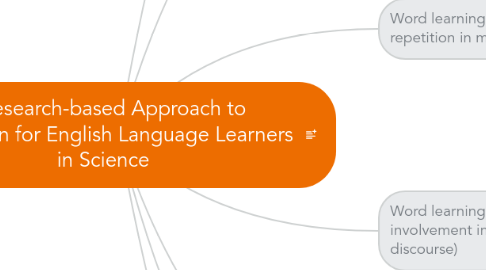
1. Time spent reading is associated with incidental learning of vocabulary, as well as a variety of other important reading-related outcomes reading may be an insufficient approach to vocabulary development for English language learners. Studies estimate that students need 8 or more encounters with a word in order to learn it and that they learn about 1 new word for every 10 they encounter. L2 vocabulary acquisition during reading is substantially enhanced by instruction that orients students toward unfamiliar words, provides information about those words, and engages students in using and thinking about the words studies have demonstrated the superiority of reading plus instruction over reading alone for the acquisition of vocabulary.
2. Word learning is supported by vocabulary-rich reading accompanied by vocabulary instruction
3. Word learning is supported by repetition in meaningful contexts
3.1. Research on vocabulary learning for students learning a second language demonstrates that repeated opportunities to interact with target words increase the likelihood that learners will acquire the words. According to different studies, it is reasonable to conclude that repeated exposure to target words over time and in meaningful contexts may support word learning better than fewer exposures and exposures in less meaningful contexts.
4. Word learning is supported by involvement in word use (in writing or oral discourse)
4.1. Retention of new words depends not only on the number of interactions with the words but also on the quality of those interactions. Students simply “learn more when they are actively involved”
4.1.1. Active processing through writing words that are processed with higher levels of involvement will be retained better than words taught in tasks that invite lower levels of involvement.
4.1.2. Active processing through social interaction researchers concluded that the social interaction—and the act of verbalizing and exchanging information—was critical for students’ learning. In addition, classroom observations indicated that the interactive tasks were engaging for learners.
4.1.3. All of the studies discussed here provide evidence that when students are given tasks that require them to use new L2 target words in a generative way—through talk or writing—they are more likely to retain the words than when they encounter the words in a more passive fashion. This is aligned with second language acquisition research that states students must have opportunities for linguistic input (listening and reading text) as well as linguistic output (speaking and writing)

